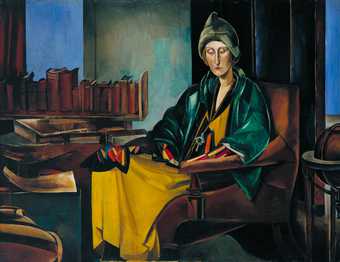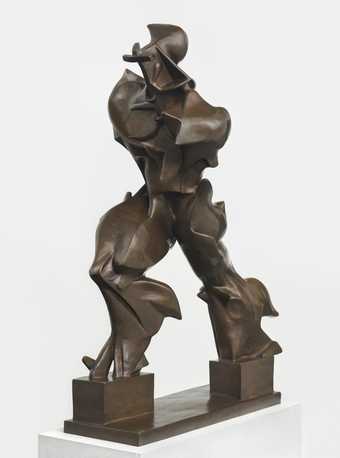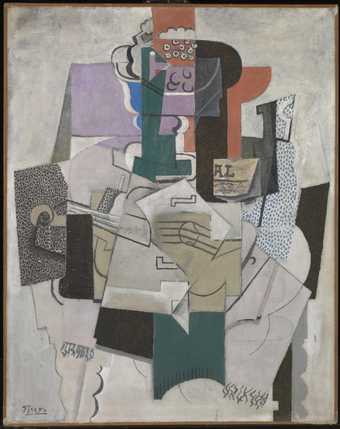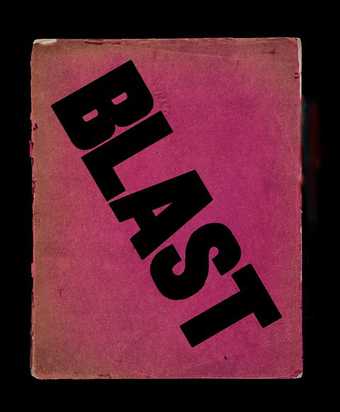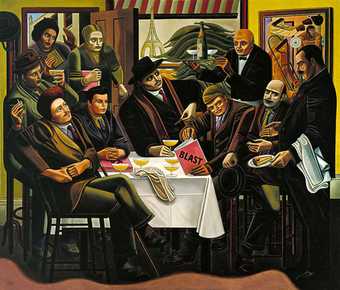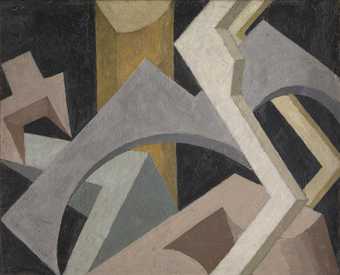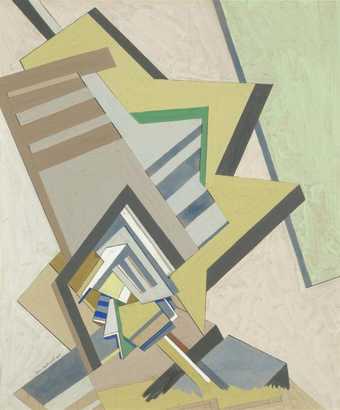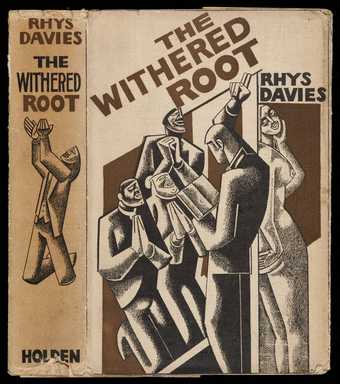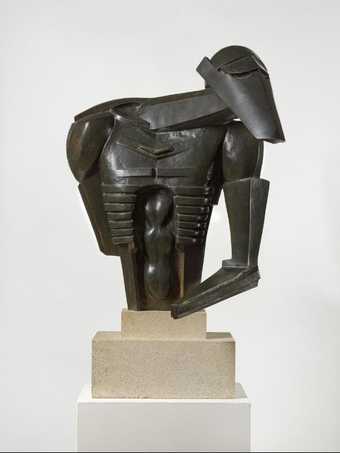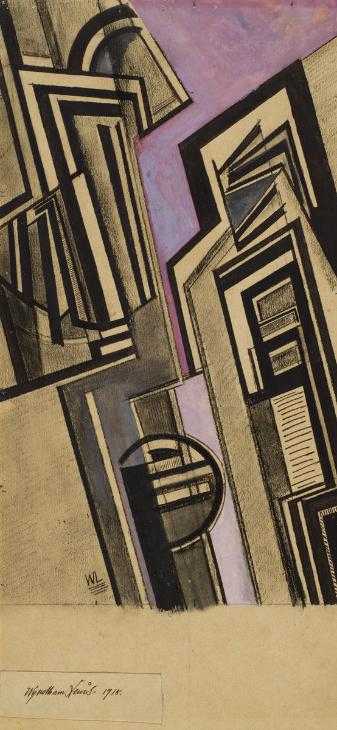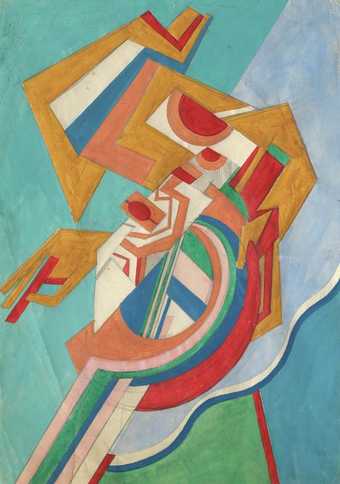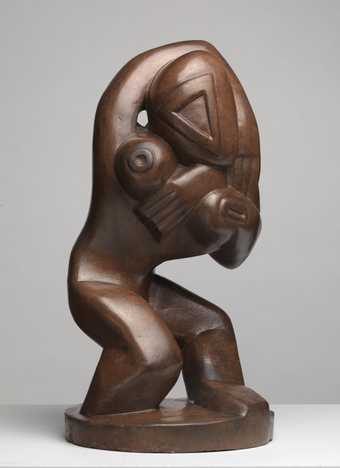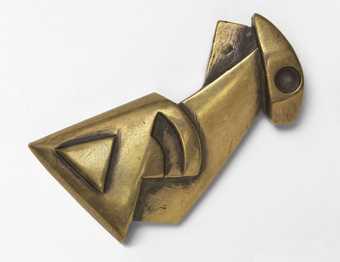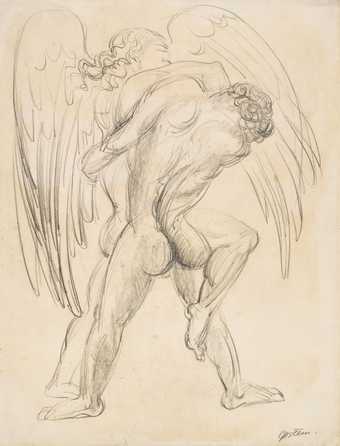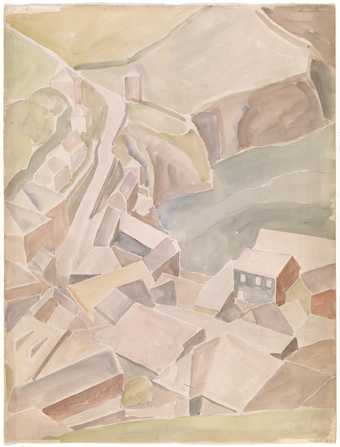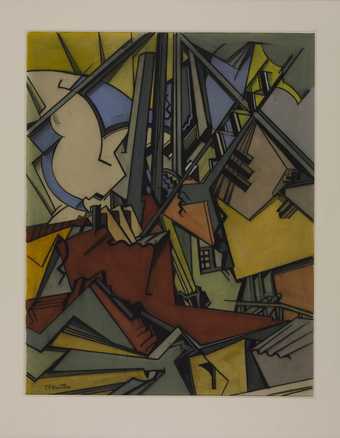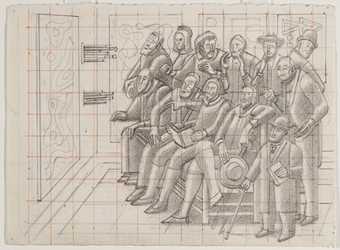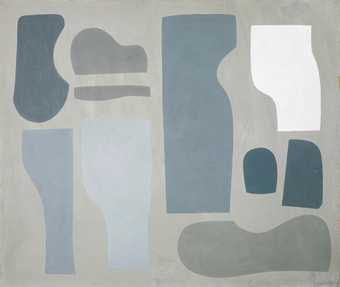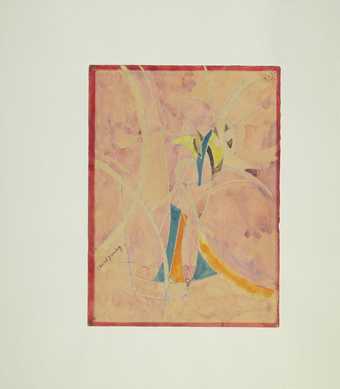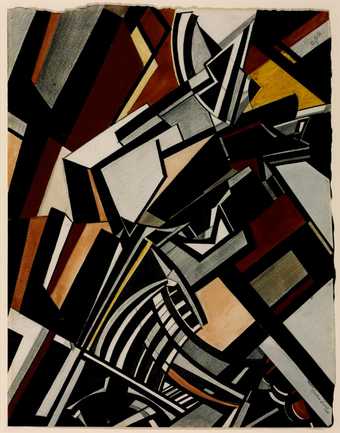The group was founded by the artist, writer and polemicist, Wyndham Lewis in 1914. Their only group exhibition was held in London the following year. Vorticism was launched with the issue (of two) of the magazine Blast which contained among other material two aggressive manifestos by Lewis ‘blasting’ what he considered to be the effeteness of British art and culture and proclaiming the vorticist aesthetic: ‘The New Vortex plunges to the heart of the Present – we produce a New Living Abstraction’.
Vorticist painting combined cubist fragmentation of reality with hard-edged imagery derived from the machine and the urban environment. It was, in effect, a British equivalent to futurism, although with doctrinal differences, and Lewis was deeply hostile to the futurists. Other artists involved with the group were Lawrence Atkinson, Jessica Dismorr, Cuthbert Hamilton, William Roberts, Helen Saunders, Edward Wadsworth, and the sculptors Sir Jacob Epstein and Henri Gaudier-Brzeska. David Bomberg was not formally a member of the group but produced major work in a similar style.
The First World War brought vorticism to an end, although in 1920 Lewis made a brief attempt to revive it with Group X. The horrors of war brought about a rejection of the avant-garde in favour of traditional art making, known as return to order.


